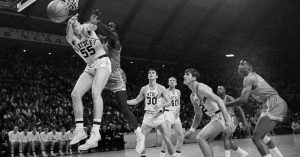How the NCAA Selection Committee Works to Build the Bracket
The selection week starts by casting of the initial ballot by every member of the committee. The ballot includes two columns with an alphabetical list of teams that qualify for Division 1. The members must forward their votes by Wednesday afternoon, which is the first day of selection. They may hand over up to 36 teams in the category of at-large bids. Also, they choose as many teams as possible that can potentially fill the at-large pool.
First Things First
 Depending on the outcomes of the first ballot, the teams cross over to at-large berths if they get eight votes. The board will consider the teams that receive three votes and more. Some regular-season champions may not make it to the at-large field after the initial ballot. These, too, are placed on the ‘under consideration’ list from which the committee picks teams for the at-large field. Teams voted as at-large into the tournament, and those that become automatic qualifiers from their conferences make it to the seed list. The top 4 on the seeding vote appears on the first line, known as the four number 1 seeds. Ultimately, the committee builds a seed list or a rank order with all teams in the field.
Depending on the outcomes of the first ballot, the teams cross over to at-large berths if they get eight votes. The board will consider the teams that receive three votes and more. Some regular-season champions may not make it to the at-large field after the initial ballot. These, too, are placed on the ‘under consideration’ list from which the committee picks teams for the at-large field. Teams voted as at-large into the tournament, and those that become automatic qualifiers from their conferences make it to the seed list. The top 4 on the seeding vote appears on the first line, known as the four number 1 seeds. Ultimately, the committee builds a seed list or a rank order with all teams in the field.
Bracketing
After the seed list is finalized, it remains unaltered as the committee assembles the bracket. The first agenda of the team is to attain a reasonable competitive balance from every bracket region. To achieve this, they add up the real seed number for 16 teams in the four No. 1 seeds. After a thorough scrutiny of the seed list, the committee allocates teams using the bracketing principles. Any school that is in the discussion is contacted to gauge its preferential first and second round plus regional sites.
There’s one important rule, though: Teams that play in the same conference must not meet before the regional semifinals and regional final if they competed against each other at least three times.








